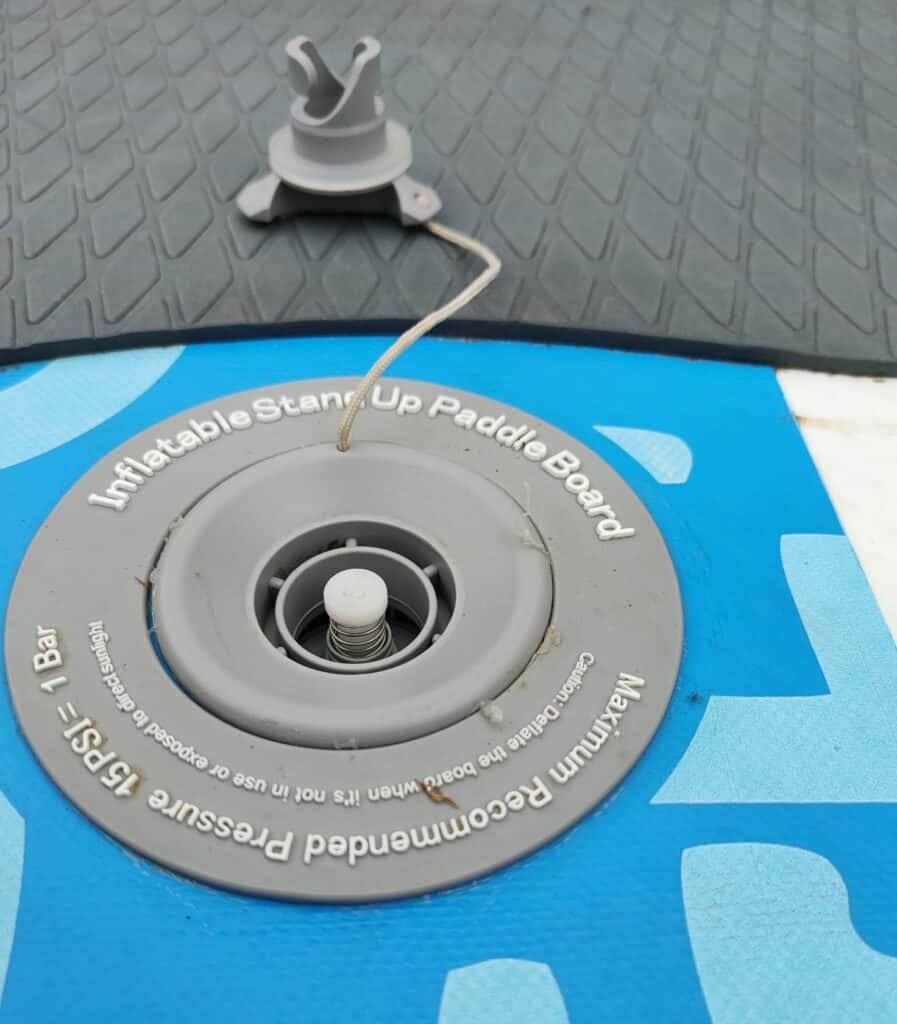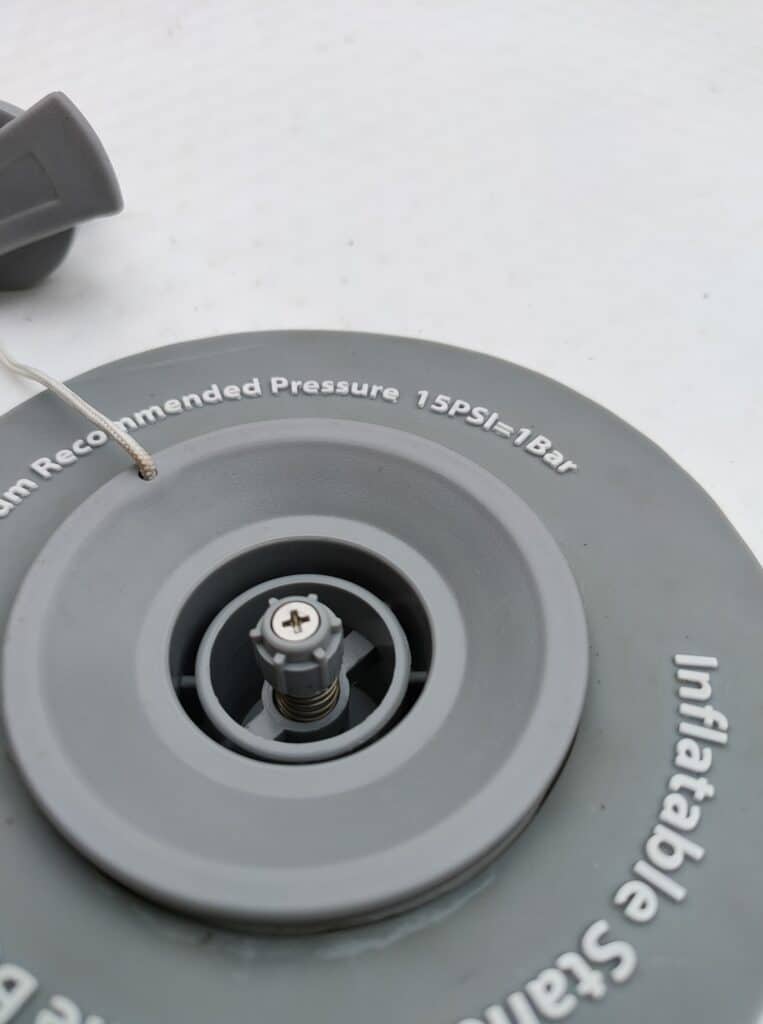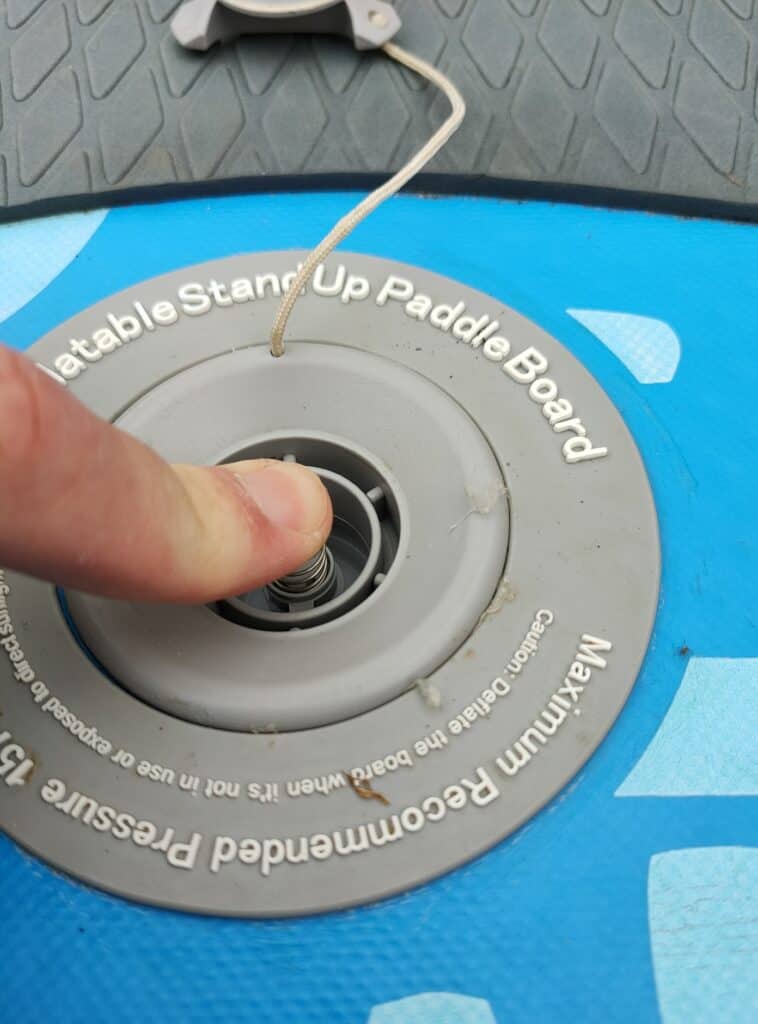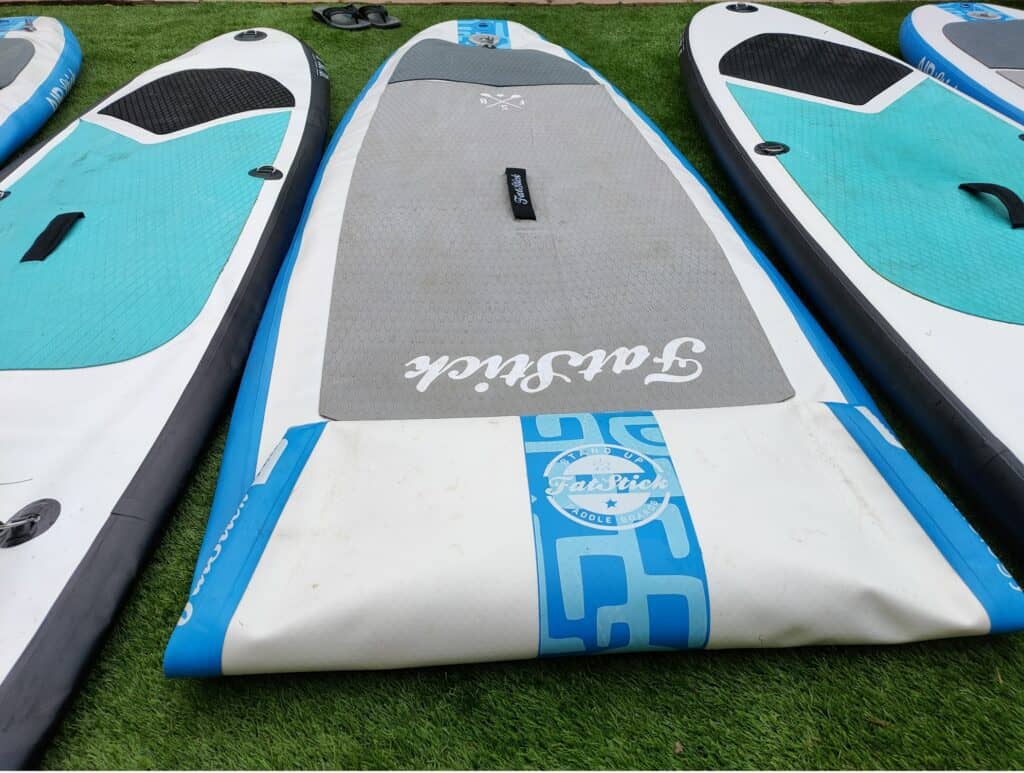Whenever I think about deflating a paddleboard my mind rushes back to the times I have been camping and spent many minutes rolling back and forth on an airbed trying to squeeze every remaining shred of air from the bed.
All of this rolling back and forth to then fold the bed up and try and force it into that tiny bag.
This is the image that runs through my head, that is, until I actually start deflating the paddleboard and remember what a breeze it is compared to anything I have previously deflated.
In the centre of the inflation valve on the board you will see either a screw or release button.

If you apply pressure to the release the air will begin escaping, to speed up the process you can lock the release valve so that it continually releases air.
There are two different ways to lock the release valve, where the release valve resembles a screw, the release valve will need to be pressed down and twisted into a lock position.

Where the release valve resembles a button it will need to be clicked down into a locked position.

Allow a sufficient amount of air to escape the board until you see it begin to flatten.
Once a sufficient amount of air has escaped starting at the opposite end of the board to the valve, begin rolling the board up applying pressure after each roll to push any trapped air towards the valve.

When the board is rolled up as far as the valve, apply pressure to the board surrounding the valve to push any remaining air out.
Once completed, release the pressure lock to ensure when you inflate the board next time you don’t get it all the way pumped up, only to take the hose out and watch all your hard work blow back in your face.
To package this up in a short but sweet summary please see below.
Simple Guide To Deflating a Paddleboard
To deflate a paddlboard first open the pressure lock valve by pressing or twisting the release button as required, this is located in the centre of the inflation valve.
Allow air to escape the board and then begin rolling the board up from the opposite end to the valve, with each roll press down on the board to force trapped air towards the valve.
Continue rolling and squeeze the remaining air out of the board. Once completed release the pressure lock and pack away the board.
Having
Different Types of Pressure Lock’s
So I mentioned above that there are two main types of pressure lock’s found in the centre of the inflation valves.
I did my best to describe what they look like however I appreciate that pictures say a thousand words.
With that being said the first type of pressure lock is the release button, this is the type of pressure lock you more commonly find on higher end models or more respectable brands.

To release the pressure lock using this type of release you will need to lock the valve in the opening position, this can be done by deep pressing the button inwards until it stays compressed downwards.
The second type of pressure lock is more commonly seen on budget or cheaper models/ brands.
This pressure lock resembles a screw and to lock open this pressure release valve you must press the screw down and twist it into a locked position.

